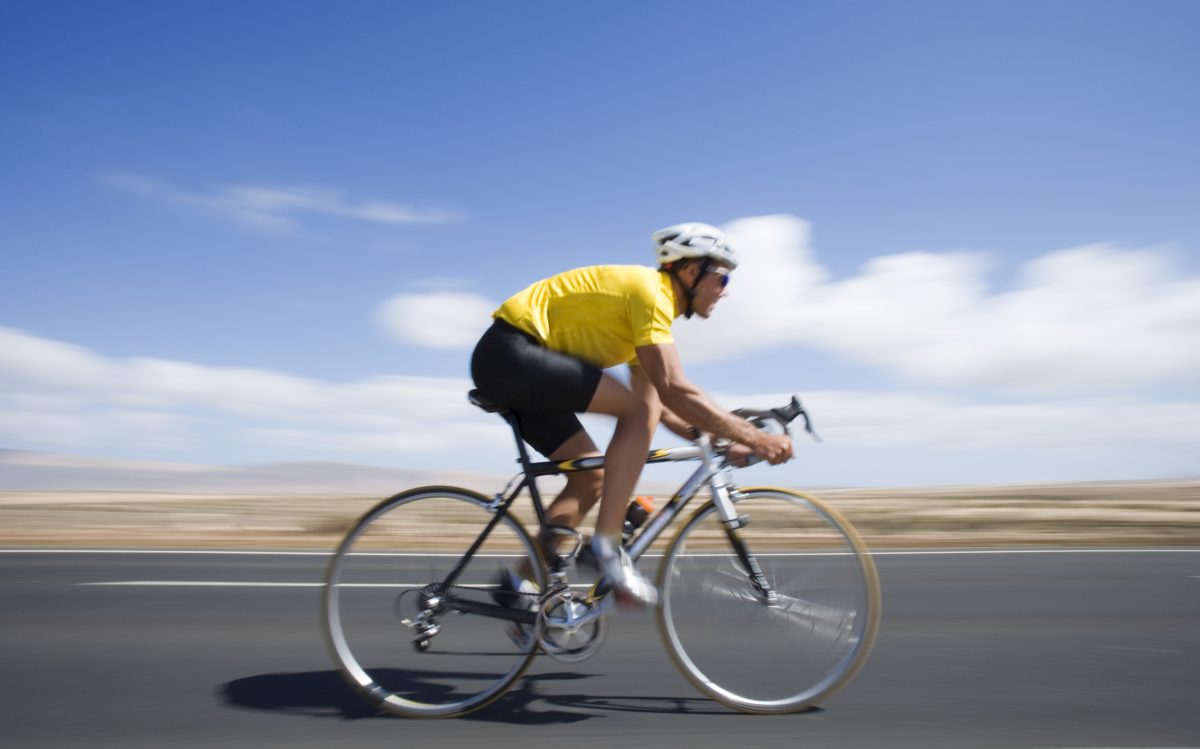Cycling in the city can be fast, fun, and eco-friendly — but it also comes with risks. As urban traffic grows, so does the need for smarter safety strategies. Whether you’re commuting to work or cruising for leisure, staying visible and alert is key.
Here are 10 essential safety tips to help urban cyclists ride with confidence and peace of mind.
1. Always Wear a Helmet
Wearing a helmet is the most effective and immediate action a cyclist or e-scooter rider can take to protect themselves on the road. It’s lightweight, simple, and scientifically proven to save lives.
Studies (Social Determinants of Health – SDH) show that helmets can reduce the risk of brain injuries by as much as 74% among cyclists and e-scooter users. That’s not a minor improvement — it’s a game changer.
In fact, 75% of bike-related fatalities involving children could be prevented with proper helmet use. And in cities where helmet laws are enforced, like New Zealand and Italy, authorities have seen significant reductions in serious injuries and deaths among light mobility users.
Helmets today are lighter, better ventilated, and smarter than ever — often weighing just 200–400 grams. There’s no excuse not to wear one. It protects your life, reduces risk, and sets an example for others.
Yet despite these facts, usage remains low. For example, fewer than 2% of injured e-scooter riders were wearing helmets at the time of their accidents — a dangerous gap between knowledge and behavior.
Some countries and companies are responding with innovation: from app-connected helmet locks that promote compliance, to MIPS-enhanced helmets that reduce rotational brain trauma by 40%. Even advanced displays are being used in Greece to detect and encourage helmet use in real time.
Tip: Replace your helmet after any major impact or every 5 years — the materials degrade over time, even without visible damage.

2. Make Yourself Visible (Day and Night)
In urban traffic, being seen isn’t just helpful — it’s critical for survival. Many accidents between cars and cyclists or e-scooter riders happen not because of reckless behavior, but because drivers simply didn’t see them in time.
Visibility isn’t just a nighttime concern. Rain, fog, shaded streets, and low sun angles can make you virtually invisible, even in broad daylight. That’s why high-visibility gear is essential no matter the hour.
Here’s how to stand out in the chaos of city traffic:
- Wear bright or fluorescent clothing during the day
- Use reflective strips on your bike, bag, and helmet
- Equip your ride with front and rear lights — always
- Position yourself confidently in the lane to avoid blending into the background
According to safety data, riders who use lights in daylight are 19% less likely to be involved in a collision. Motion-based visibility — like ankle reflectors or handlebar-mounted lights — also catches the eye faster than static elements.
And don’t forget: your back is your blind spot — not just for you, but for everyone behind you. That’s where smart lighting solutions come in. Systems that adjust automatically, respond to your movement, and provide rear visibility can make a huge difference without requiring extra effort or thought.
Whether you’re weaving through traffic or stopped at an intersection, your visibility can mean the difference between a clean ride and a collision. Make it part of your gear — not an afterthought.
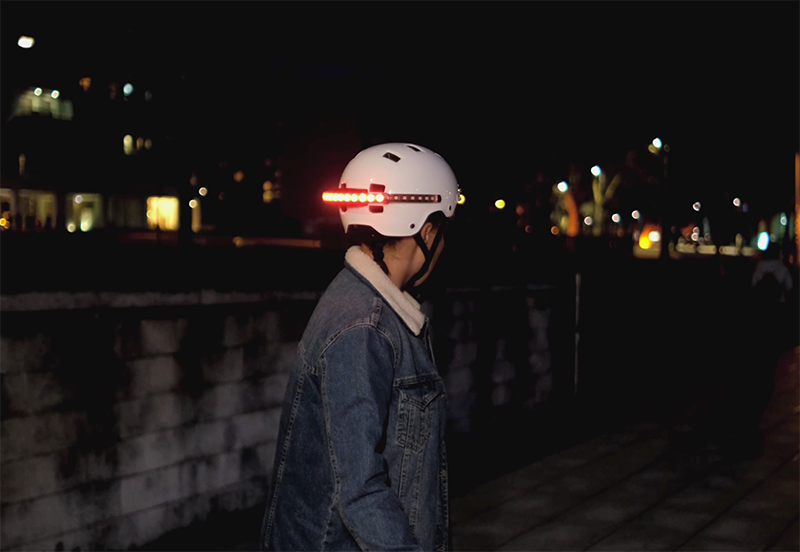
3. Use Bike Lanes Whenever Possible
Dedicated bike lanes are designed to give cyclists and light mobility users a safe space within the traffic system. They reduce direct exposure to cars and can significantly lower the risk of accidents — especially in cities that actively invest in bike-friendly infrastructure.

But a painted line on the asphalt isn’t a force field. Riders still face real dangers, even within a designated lane:
- Car doors opening unexpectedly from parked vehicles
- Drivers turning right across your path without signaling
- Pedestrians stepping into the lane without looking
- Delivery vehicles or scooters blocking your way
That’s why using a bike lane is about more than just following the paint — it requires active awareness.
Here’s how to ride smarter in a bike lane:
- Keep a safe distance from parked cars to avoid dooring
- Slow down when approaching intersections and driveways
- Signal your intentions clearly, even if the lane continues
- Assume you’re not seen — make eye contact when possible
In some areas, “protected” bike lanes offer physical separation with curbs or bollards. These are ideal, but not always available. Until cities catch up, the best approach is to treat every bike lane as shared space — and ride with caution.
And as you navigate these lanes, it helps to have gear that works with your movement, not against it — especially when signaling and staying visible. More on that soon.
4. Signal Your Intentions Clearly
Letting others know what you’re about to do is one of the golden rules of safe riding. But when you’re balancing on two wheels, often navigating potholes, cars, and pedestrians, taking a hand off the handlebar to signal can feel risky — or even unsafe.
Traditional hand signals are still essential, especially in countries where they’re part of the legal riding code. But they’re not always the most practical solution, particularly when:
- You’re riding one-handed over cobblestones
- You need to signal and brake at the same time
- It’s raining, and both hands need to stay firm on the grips
Urban traffic doesn’t always give you a margin for error — or for ambiguity. That’s why more riders are turning to enhanced signaling solutions that don’t interfere with control.
Clear, confident signaling:
- Makes you predictable to drivers
- Prevents sudden swerves or misunderstandings
- Gives others time to respond safely
- Helps group riders (especially kids) stay coordinated
Hands-free signaling tech, when integrated into your helmet or gear, offers a seamless way to stay communicative without compromising balance or focus. Imagine being able to signal a turn simply by moving your head slightly — no effort, no delay, no extra devices.
That’s not science fiction — that’s smart cycling. And in dense city streets, it can make all the difference.
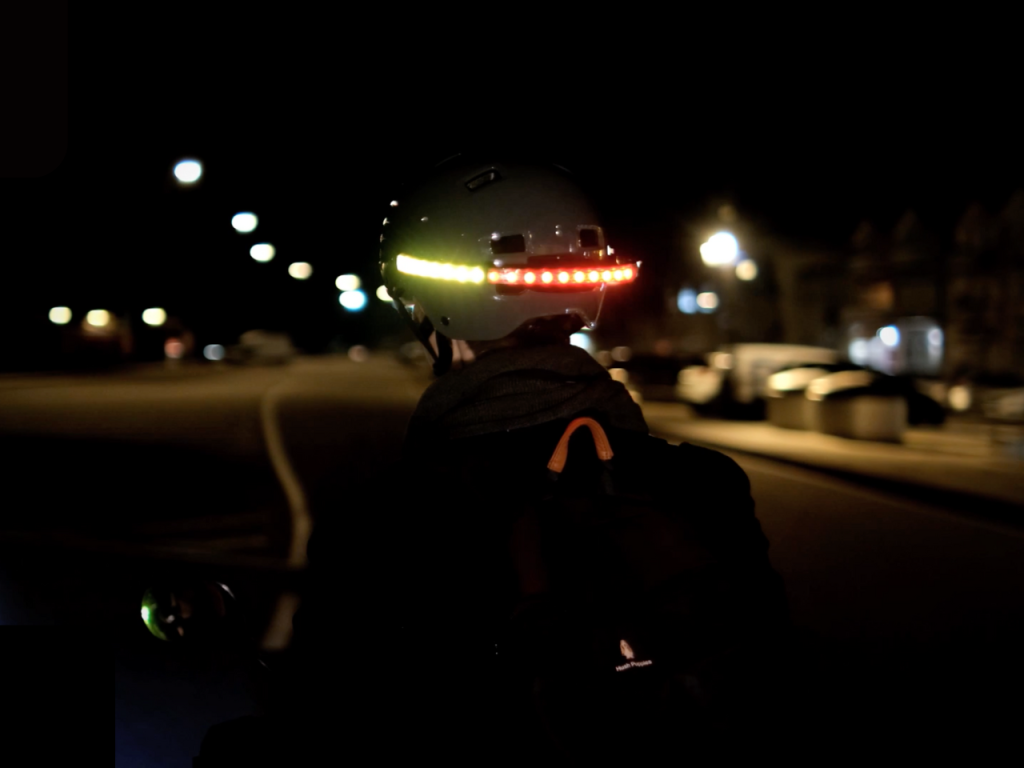
5. Be Extra Cautious at Intersections
Intersections are the number one danger zone for cyclists and e-scooter users. It’s where different paths cross — and where attention lapses, miscommunication, and blind spots often collide.
Even when you have the right of way, never assume drivers will stop. Many accidents happen simply because a driver didn’t notice the cyclist, or misunderstood their intention. That’s why active caution at intersections isn’t optional — it’s essential.
Here’s how to approach intersections smartly:
- Slow down — give yourself time to assess what others are doing
- Make eye contact with drivers whenever possible
- Avoid riding beside large vehicles, especially buses or trucks turning right
- Stay out of the blind spot and ahead of the driver’s field of view
- Use clear signaling — manual or otherwise — before making any turn
Roundabouts, in particular, are tricky. Riders entering them often struggle to be noticed, and exiting drivers don’t always check twice. In these environments, being visible and predictable is everything.
The more clearly you communicate your intention — and the sooner you do it — the better your chances of moving through safely. Technology that lets you signal early and hands-free, especially when navigating turns or slowing down, can be a valuable asset in busy junctions.
Because when everyone’s attention is divided, standing out might just keep you from getting taken out.
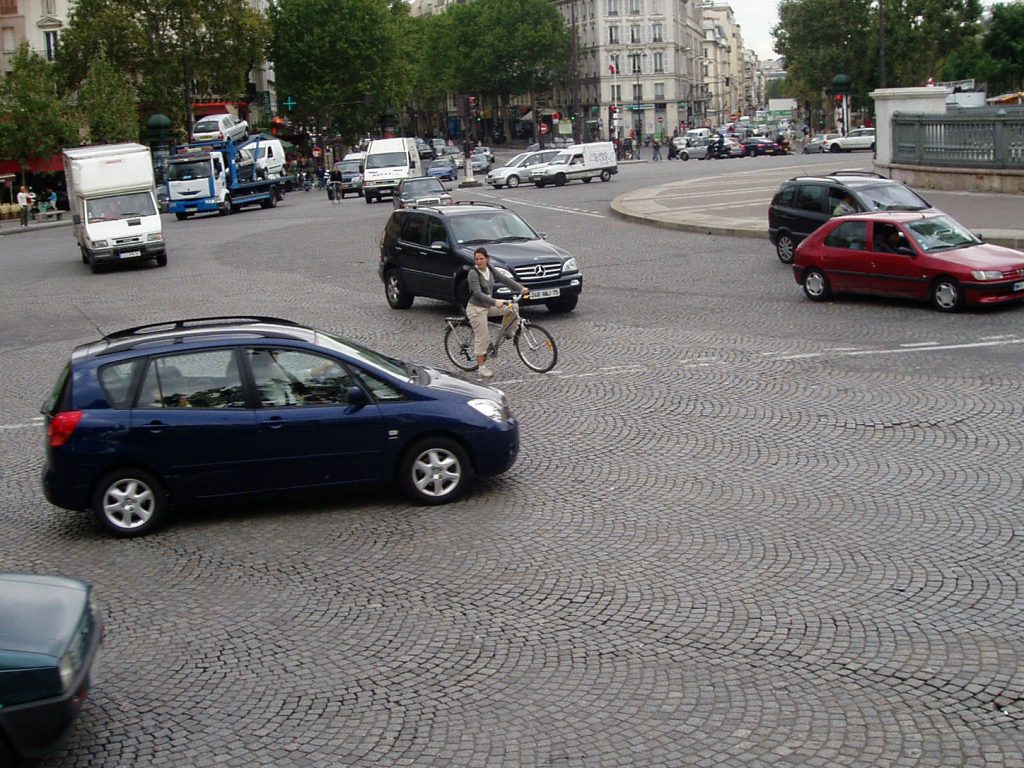
6. Stay Out of Blind Spots
If you’re riding next to a truck, bus, or van and you can’t see the driver’s mirrors, there’s a good chance they can’t see you either. And when they turn, change lanes, or accelerate, that moment of invisibility can become a real danger.
Blind spots are a serious issue in urban mobility — especially in stop-and-go traffic or narrow streets. Unlike cars, larger vehicles have wider zones of no visibility, particularly on the right side and directly behind the vehicle.
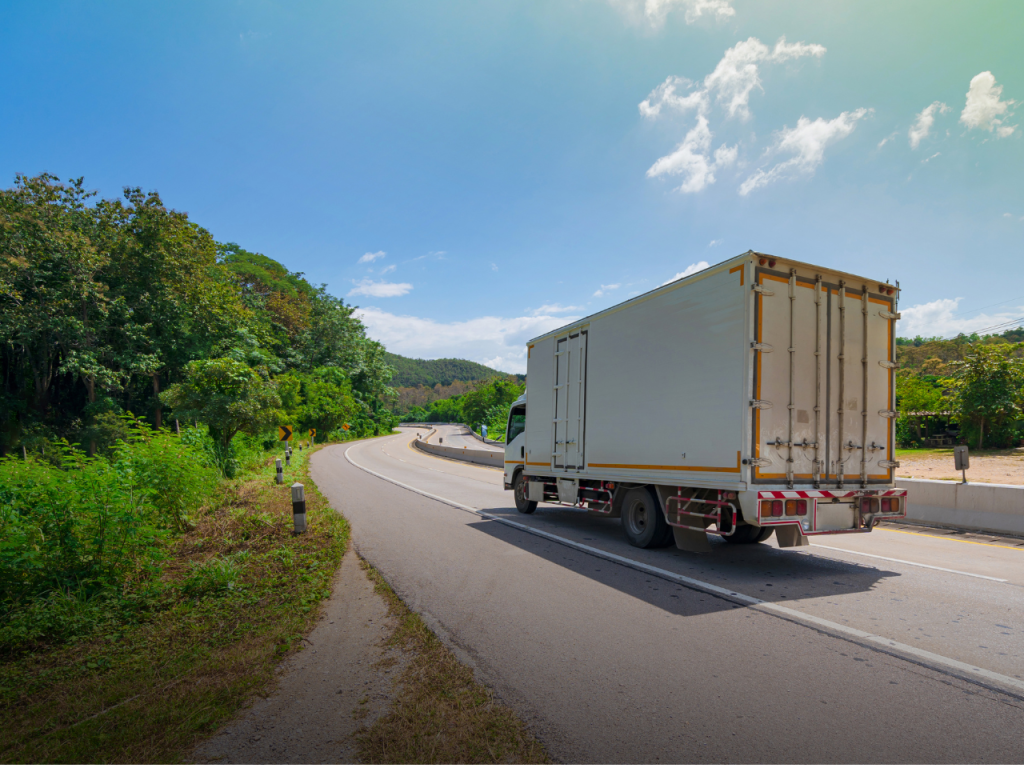
Here’s how to stay safe:
- Never ride up the inside of a large vehicle approaching a turn
- Avoid lingering beside buses or trucks at intersections
- Give extra space at red lights — drivers may not expect you when they start moving
- If you must pass, do so decisively and visibly — not while hidden alongside
Remember, most professional drivers are cautious — but they rely on visual cues. If they don’t know you’re there, they can’t act accordingly.
And if you’re riding in low light or bad weather, your visibility drops even further. That’s where lighting — especially smart lighting placed at eye-level like on a helmet — plays a crucial role.
When your signals are positioned higher and activated automatically, you’re not only more visible — you’re also more unmistakable.
7. Equip Your Bike with the Right Lights
Good lighting isn’t just about riding at night. It’s about being seen in every condition — at dawn, in tunnels, during fog, under heavy shade, or even on cloudy days.
Front and rear lights are the bare minimum for any urban cyclist or scooter rider. But not all lights are created equal — and more doesn’t always mean better.
A smart lighting setup should:
- Include a white front light and a red rear light
- Be visible from at least 100 meters
- Be mounted at eye-catching height — ideally not too close to the ground
- Offer a flashing mode for added visibility in daylight
- Be weather-resistant and rechargeable for regular use
Lights aren’t just for seeing the road — they’re for making sure others see you.
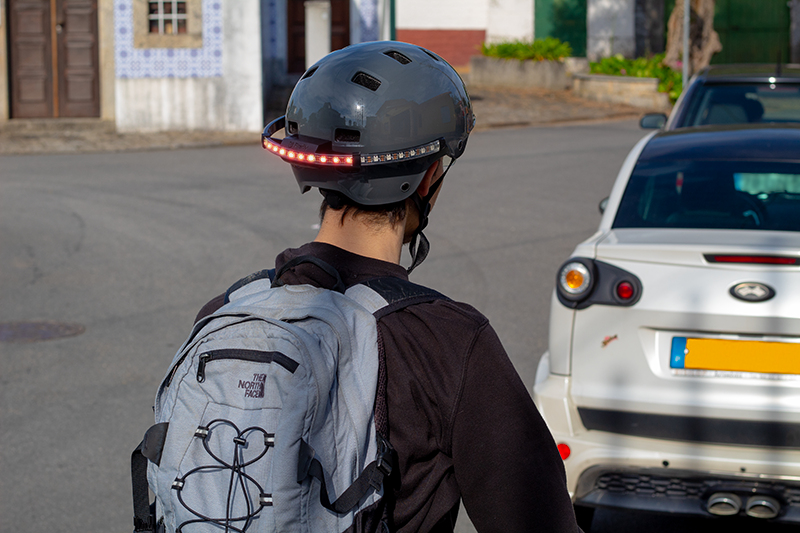
Many cities report a significant drop in bike collisions when riders use daytime running lights. And yet, many riders only turn their lights on at night — a missed opportunity for safer commuting.
Modern solutions now go a step further. Systems that integrate lighting with turn and brake signals, placed on the helmet for higher visibility, offer a new level of communication on the road — without requiring hand gestures or physical switches.
It’s not just about illumination anymore — it’s about interaction.
8. Avoid Distractions
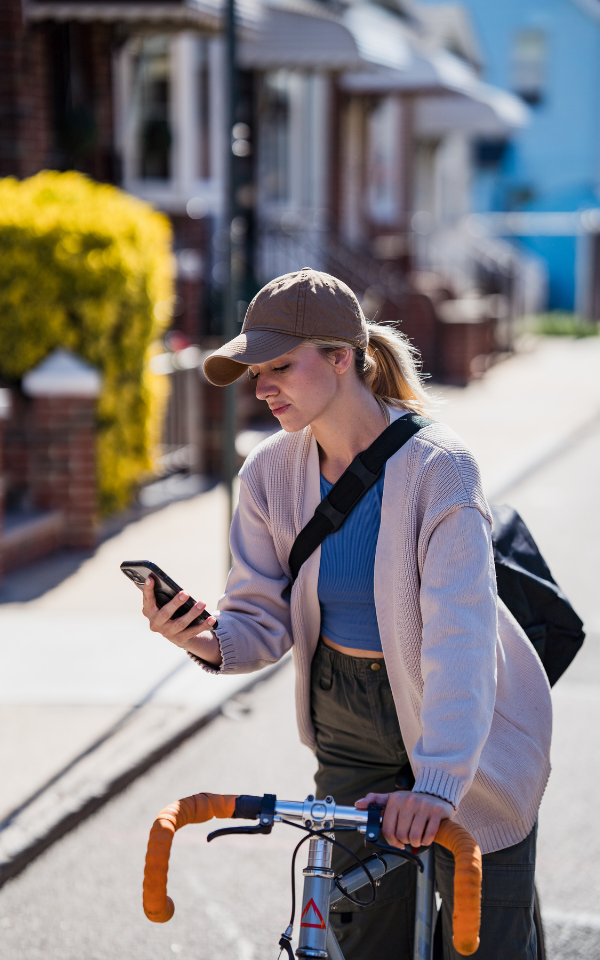
Urban riding is all about anticipation. With cars weaving between lanes, pedestrians glued to their phones, and unexpected obstacles everywhere, you need to be fully present on your bike or e-scooter. Unfortunately, distraction is one of the biggest threats to your safety.
It might seem harmless to check a notification, change a song, or glance at your GPS — but when you’re riding, even a 2-second distraction can mean the difference between a near miss and a serious injury.
Common distractions that put riders at risk:
- Listening to music or podcasts with both earbuds in
- Holding your phone or mounting it poorly
- Mentally zoning out in familiar routes
- Adjusting gear or lights while moving
Instead, set up everything before you start riding — your route, volume, lights, and gear. Use a reliable mount if you need navigation and keep your hands on the handlebars at all times.
Some solutions offer audio feedback instead of visual cues, which allow you to stay informed without diverting your eyes from the road. This kind of smart integration makes a huge difference in urban environments, where reaction time is everything.
The more aware you are, the more predictable you become — and predictability saves lives.
Staying focused isn’t just about avoiding your own mistakes — it’s about being ready for someone else’s.
9. Check Your Equipment Regularly
Even the most experienced riders can be caught off guard by a loose brake, a flat tire, or a dying battery. That’s why a quick check before each ride is one of the smartest habits you can build.
You don’t need to be a bike mechanic — just take a minute to look over the essentials. Small issues caught early can prevent accidents, frustration, or expensive repairs.
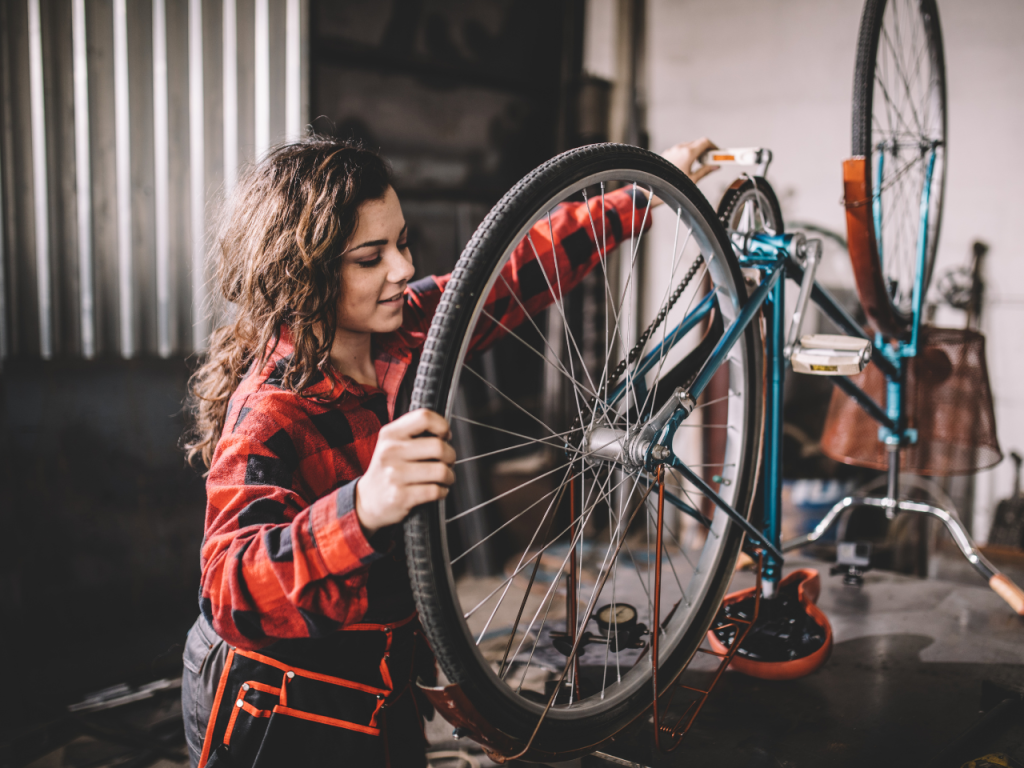
Your pre-ride checklist:
- Brakes: Squeeze them — do they respond immediately and evenly?
- Tires: Check for proper pressure, visible damage, or objects stuck in the tread.
- Chain: Is it clean, lubricated, and well-tensioned?
- Lights and Signals: Are your LEDs charged and working? Are your indicators responding?
- Helmet: Is it adjusted properly and free of cracks or wear?
If you don’t check your gear, the road will do it for you — and it won’t be gentle.
For devices like Firefly, ensure the unit is securely mounted, fully charged, and that the signaling system activates properly. It takes only a few seconds, and gives you peace of mind for the entire ride.
Turn this into a habit, and you’ll not only extend the life of your equipment — you’ll also reduce unexpected stops and ride with more confidence.
10. Upgrade to a Hands-Free Signaling System
Signaling your intentions clearly is one of the most effective ways to prevent accidents and stay safe in traffic. But traditional hand signals come with a catch — they require you to take a hand off the handlebars, which can be uncomfortable, unstable, or even dangerous in fast-paced or unpredictable environments.
That’s where smart signaling solutions come in — and why so many riders are turning to technology to fill the gap between control and communication.
Meet Firefly: a new kind of safety light
Developed by Thowra, Firefly is a helmet-mounted LED signaling system that uses head movement to activate turn and brake lights, keeping your hands on the bars and your focus on the road.
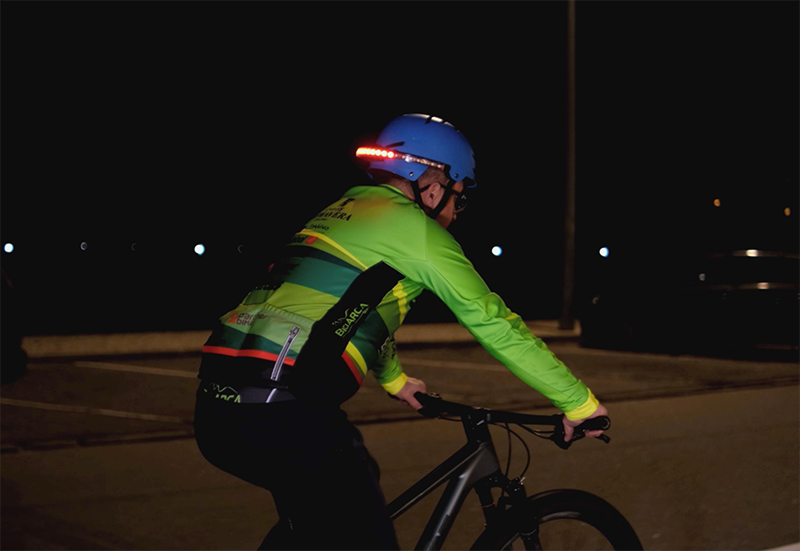
Key features:
- Hands-free signaling with intuitive head gestures
- Bright, high-visibility LED lights visible up to 100 meters
- Audible feedback with integrated buzzers so you know your signal is active
- Weather-resistant and ultra-light (just 100g)
- 8-hour battery life with magnetic charging
- Paired with a smart app to customize sensitivity, track rides, and ride in groups
Whether you’re commuting, riding with friends, or sending your kids to school, Firefly adds a layer of predictability and safety that traditional lights and gestures can’t match.
It’s more than a light. It’s a communication system — designed for a new era of urban mobility.
Learn more and support Firefly on Indiegogo

